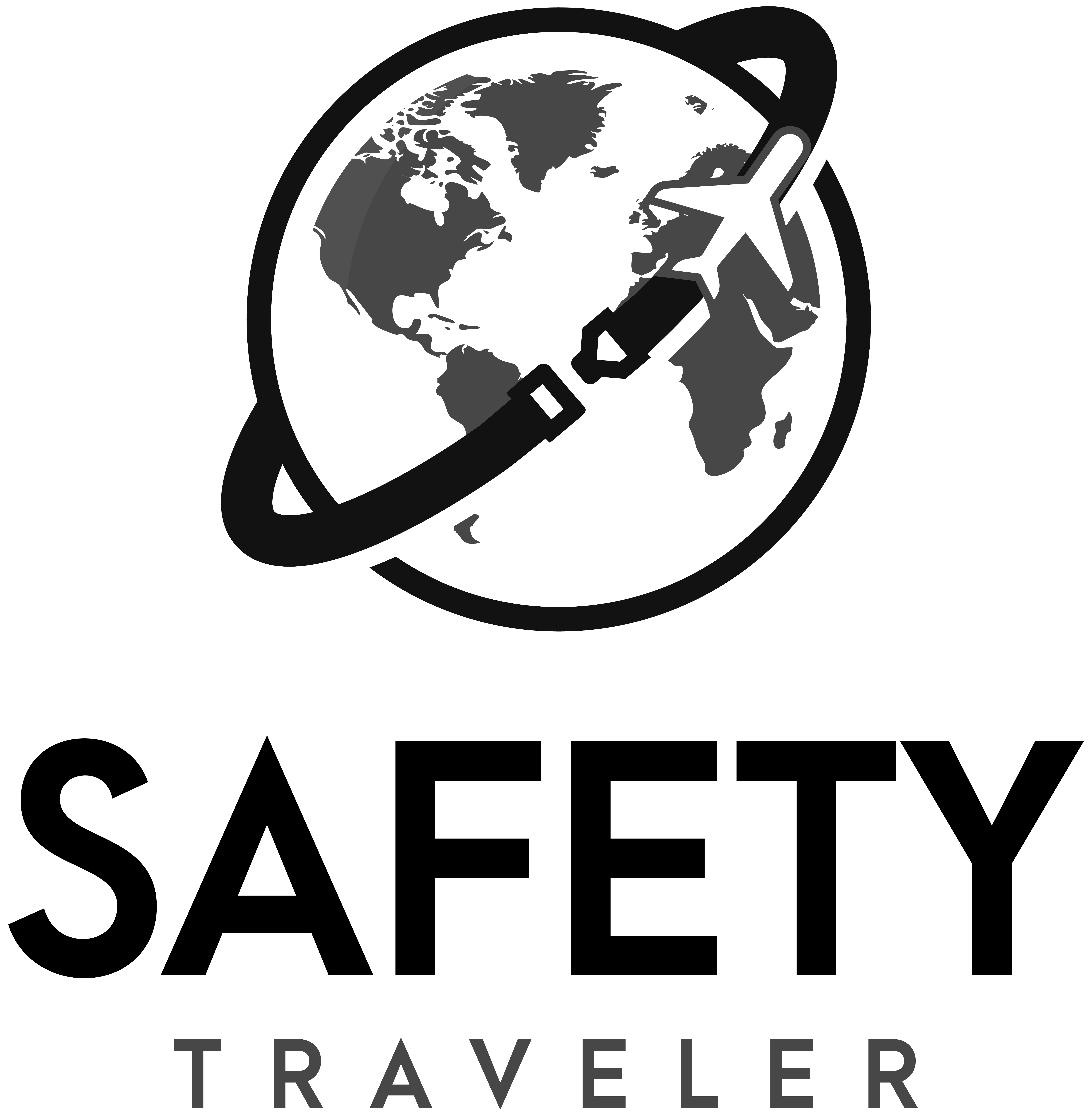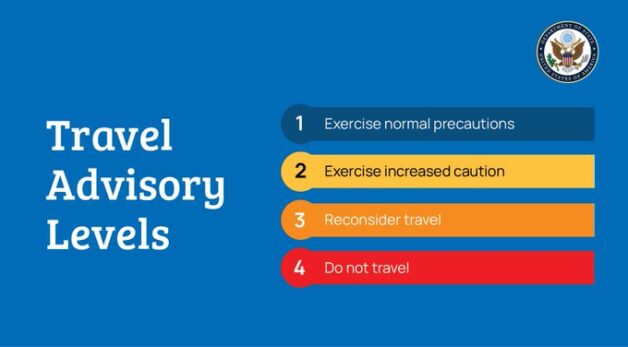Introduction:
When planning an international trip, it’s essential to stay informed about the safety and security situation in your destination country. The U.S. Department of State issues travel advisories to help travelers make informed decisions and prepare for potential risks. However, seeing a high advisory level for your dream destination can be disheartening, but it doesn’t always mean the trip needs to be called off. As a seasoned traveler, I’ve learned that it’s crucial to understand what these levels really mean and how to navigate them. In this post, I’ll break down the different travel advisory levels, provide examples of some countries at each level, and offer tips for traveling safely no matter where your adventures take you.
The Four Travel Advisory Levels:
Level 1: Exercise Normal Precautions:
This is the lowest level of travel advisory. It means that the country is generally safe for travel, with no significant security concerns. However, it’s still important to take standard precautions, such as being aware of your surroundings and safeguarding your belongings.
Examples of Level 1 countries:
Canada
Australia
Japan
France
Germany
When traveling to a Level 1 country, you can feel confident in exploring all that the destination has to offer. However, it’s still wise to take basic safety measures like keeping an eye on your valuables in crowded tourist areas and being mindful of local laws and customs.
Level 2: Exercise Increased Caution:
A Level 2 advisory indicates that there are some specific safety or security concerns in the country. This might include things like petty crime, demonstrations, or weather-related events. When traveling to a Level 2 country, it’s important to be more vigilant and take extra precautions to avoid potential risks.
Examples of Level 2 countries:
Mexico
India
South Africa
Italy
United Kingdom
If you’re planning a trip to a Level 2 country, it’s essential to do your research and stay informed about the specific risks in your destination. For example, in Mexico, the U.S. Department of State warns about increased crime and kidnapping in certain areas. By being aware of these concerns and taking appropriate precautions, such as avoiding high-risk areas and using reputable transportation, you can still have a safe and enjoyable trip.
As you also see on the U.S. Department of State’s Travel Advisory, Italy falls under category 2. On their website, as of July 26th, 2023, the U.S. Department of State has labeled Italy as a Travel Advisory Level 2 for this reason: “Exercise increased caution due to terrorism.” Sounds absolutely terrifying, right? Anybody who is planning an amazing trip to Italy would be put off by this and probably cancel their trip immediately if they didn’t know better. I’ll be honest, even I was caught off guard by this when I first saw it.
It’s important to remember the governments job is to inform you of a worst-case scenario event, in the chance that it does happen, they can say they made you aware of it. There may have been some talk of a terrorist event or activity, or some reason for them to place this verbiage on their website. But don’t always let the fear win. Do your research beforehand and see how likely of a threat this is. Safety Traveler is a great resource for this kind of information.
I’m also happy to report that I went to Italy in December of 2023 with my family (a few months after this advisory was announced) and we did not see one single terrorist attack, nor did we hear about a terrorist attack either. This is a prime example of being aware of what could happen, but not being afraid of it. Sometimes the fear can prevent people from traveling and seeing what this amazing world has to offer. In this case, I was warned about Italy (as you are now too), still went, and had an amazing time. Life is just too short to worry about every little thing that could happen. Always do your research on a destination and make the judgment call yourself. And again, don’t let the fear win.
Level 3: Reconsider Travel:
This level suggests that there are serious safety and security risks in the country. The U.S. government may have limited ability to assist travelers in these areas. If you’re considering travel to a Level 3 country, it’s crucial to carefully assess the risks and weigh them against the importance of your trip.
Examples of Level 3 countries:
Venezuela
Iraq
Nigeria
Pakistan
Honduras
When a country is at a Level 3 advisory, it means that there are significant risks to travelers’ safety, such as ongoing civil unrest, terrorist activity, or high levels of violent crime. If you do decide to travel to a Level 3 country, it’s essential to have a solid safety plan in place. This might include enrolling in the Smart Traveler Enrollment Program (STEP) to receive updates from the U.S. embassy, purchasing comprehensive travel insurance, and having an emergency evacuation plan.
Level 3 advisory is a little more intense than 2, as you can see. People still travel to these countries, however, even though the risks seem more severe than the previous advisories. Again, do your research before traveling to a destination to ensure maximum safety. No place in the world is 100% safe, but when you take the appropriate steps beforehand, you can make your trip just that much safer.
Level 4: Do Not Travel:
The highest level of travel advisory, a Level 4 warning, indicates that the country is extremely dangerous, and all travel should be avoided. This may be due to ongoing armed conflict, civil unrest, or other significant threats. In these cases, the U.S. government may have very limited ability to assist citizens in the country.
Examples of Level 4 countries:
Syria
Yemen
Afghanistan
North Korea
Somalia
If a country is at a Level 4 advisory, it means that the risks to travelers’ safety are severe and potentially life-threatening. The U.S. Department of State advises all citizens to avoid travel to these countries, and those who are already there should consider leaving as soon as it is safe to do so.
I have been to countries on the level 4 advisory list. These are not countries that everyone should travel to, for obvious reasons. These advisories are the most extreme, and usually for a valid reason. If you are new to traveling, I would steer clear of destinations on this list. Even if you are experienced, there is just some level of risk that I personally think is not always worth it. This is one of those. There are many other countries the world has to offer that are safer than these, so use common sense and good judgment when making that choice.
Tips for Traveling Safely:
Stay informed: No matter where you’re traveling, it’s essential to stay up-to-date with the latest news and developments in your destination country. The U.S. Department of State website is a great resource for this, as well as local news outlets and government websites.
Register your trip: Before you depart, consider enrolling in the Smart Traveler Enrollment Program (STEP). This free service allows U.S. citizens traveling or living abroad to receive important safety and security updates from the nearest U.S. embassy or consulate.
Get travel insurance: Comprehensive travel insurance can provide peace of mind and financial protection in case of emergencies abroad. Make sure your policy covers the specific risks in your destination country, such as emergency evacuation or medical treatment.
Have a plan: It’s always a good idea to have an emergency plan in place, especially when traveling to higher-risk countries. Know what you’ll do in an emergency situation, have important contact numbers on hand, and consider sharing your itinerary with a trusted friend or family member back home.
Be aware of your surroundings: No matter where you are in the world, it’s important to stay alert and be aware of your surroundings. Pay attention to local news, avoid high-risk areas, and trust your instincts if something doesn’t feel right.
Respect local laws and customs: Before you travel, take time to research the local laws and customs in your destination country. Something that may be legal or socially acceptable at home could be illegal or offensive in another country. By being respectful of local norms, you can avoid unintentionally putting yourself at risk.
Use reputable services: When booking transportation, tours, or accommodations abroad, always use reputable companies with a proven track record of safety and reliability. Reading reviews from other travelers can be a helpful way to vet potential services.
Conclusion:
While travel advisories can seem intimidating, understanding what they mean and how to navigate them is key to staying safe and informed during your travels. By researching your destination, taking appropriate precautions, and staying alert, you can minimize risks and focus on enjoying all that the world has to offer. Remember, the decision to travel is ultimately a personal one, but being informed and prepared can help you make the best choice for your own safety and peace of mind. Whether you’re exploring a Level 1 country or venturing into a higher-risk destination, the world is a beautiful and exciting place. With the right knowledge and preparation, you can experience it safely and confidently.

